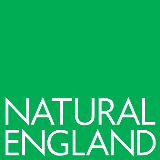Mid Cornwall Moors SSSI
Feedback updated 15 Nov 2017
We asked
For your views on the notification of the Mid Cornwall Moors SSSI.
You said
Whether you objected, supported or were neutral towards the notification; see Annex 1 of Natural England Board paper under ‘Board meetings’ at: https://www.gov.uk/government/organisations/natural-england/about/our-governance
Responses through Citizen Space: see "Results Updated 15 November 2017" for a file showing comments from RSPB which expressed support for the Mid Cornwall Moors SSSI notification.
We did
Consider all objections and representations. Officers discussed and clarified points with individuals to ensure the notification documents and evidence were understood, and discussed the meaning of the SSSI in relation to farming and land management. Officers made recommendations to the Board of Natural England who approved confirmation of the notification with modifications to the boundary map (removing land not considered to be of special scientific interest) along with changes to the citation (description of the special interest). The final legal documents are available on this page.
Details of the Board’s decision will be available in due course at: https://www.gov.uk/government/organisations/natural-england/about/our-governance.
The Mid Cornwall Moors SSSI is now protected in perpetuity.
Results updated 15 Nov 2017
The notification document issued on 23 February 2017 explains why Mid Cornwall Moors is notified by Natural England as an SSSI. The Mid Cornwall Moors SSSI has over 160 owners and occupiers. Objections were received and seven which remained unresolved were considered by the Board of Natural England at its meeting on 1 November 2017. For details of objections, see the Natural England Board paper: https://www.gov.uk/government/organisations/natural-england/about/our-governance.
The Board of Natural England approved the confirmation of the notification of the Mid Cornwall Moors SSSI with modifications to the boundary map and the citation (description of the special interest). The final legal documents are on this page.
The notification document also set out the proposal to remove the SSSI notifications (known as ‘de-notification’) from parts of the previously notified Breney Common SSSI, Goss and Tregoss Moors SSSI and Redmoor SSSI that are not considered to be of special interest. There are no outstanding objections and the proposed de-notifications have been confirmed without modification. The de-notified land (as shown on the maps that formed part of the notification document of 23 February 2017, available from https://consult.defra.gov.uk/natural-england/mid-cornwall-moors is no longer subject to the effects of notification as an SSSI.
Files:
- Mid Cornwall Moors SSSI confirmed citation, 113.7 KB (PDF document)
- Mid Cornwall Moors confirmed Summary Map, 6.4 MB (PDF document)
- Mid Cornwall Moors SSSI Confirmed detail map 1 of 11 , 921.7 KB (PDF document)
- Mid Cornwall Moors SSSI Confirmed detail map 2 of 11, 1.2 MB (PDF document)
- Mid Cornwall Moors SSSI Confirmed detail map 3 of 11, 1.4 MB (PDF document)
- Mid Cornwall Moors SSSI Confirmed detail map 4 of 11, 1.1 MB (PDF document)
- Mid Cornwall Moors SSSI Confirmed detail map 5 of 11, 1.2 MB (PDF document)
- Mid Cornwall Moors SSSI Confirmed detail map 6 of 11, 1.0 MB (PDF document)
- Mid Cornwall Moors SSSI Confirmed detail map 7 of 11, 1.4 MB (PDF document)
- Mid Cornwall Moors SSSI Confirmed detail map 8 of 11, 1.3 MB (PDF document)
- Mid Cornwall Moors SSSI Confirmed detail map 9 of 11, 1.4 MB (PDF document)
- Mid Cornwall Moors SSSI Confirmed detail map 10 of 11, 1.0 MB (PDF document)
- Mid Cornwall Moors SSSI Confirmed detail map 11 of 11, 1.1 MB (PDF document)
Overview
Parts of the Mid Cornwall Moors were notified as a Site of Special Scientific Interest (SSSI) on 23 February 2017 recognising the national importance of the semi-natural habitats.
You can submit your views via an online survey, by email or post.
Before you submit your views, we recommend you read more about the notification. The Notification document can be found in the related documents section.
Why your views matter
Notification: Mid Cornwall Moors Site of Special Scientific Interest (SSSI), Cornwall.
The Mid Cornwall Moors are located at the headwaters of the River Fal and River Par catchments with Goss Moor at their centre. The larger new SSSI covers over 50% more land than the six SSSIs that previously dotted the landscape of Mid Cornwall either side of the A30 and east of Indian Queens.
The site is a rich and varied mix of heathland, woodland and wildflower meadows which are a vital sanctuary for wildlife, as well as an important asset for local people, visitors and businesses. The new SSSI includes several closely located patches of land that connect important habitats and will help wildlife to withstand pressures from future climate change. It forms a stronger refuge and network for rare plants, such as Cornish eyebright, coral-necklace, yellow centaury, pillwort and lesser butterfly orchid, and animals, including the marsh fritillary butterfly, along with very rare mud snails and water beetles only found in this part of the UK. Fens and mires in the headwaters of the River Fal and River Par catchments also help to provide clean water and have the potential to reduce flood risk to homes and properties located further downstream.
The wet woodlands throughout the area are also important for the willow tit, a bird which has virtually disappeared from large parts of the UK and declined by an estimated 81% since the mid-1990s. The new areas added to the SSSI include important breeding sites for this special species.
Building on the successes of the Mid Cornwall Moors LIFE project which ended in 2008, Natural England hopes that the notification will be a catalyst for even more effective management in the medium to long term, leading to an overall increase in the quality of habitats and their associated plants and animals. This includes sensitive management of habitats through careful grazing by cattle and maintaining water levels at or around the surface to make sure the habitat is at its healthiest
The outcome Natural England wishes to achieve with this designation is sustainably conserving a wonderful part of Cornwall’s landscape and safeguarding the services it offers for the benefit of both people and the environment.
What happens next
We are now assessing the response to the consultation and will be making a recommendation to the Board of Natural England in due course. Natural England has to make a decision to either confirm or withdraw this notification by 22 November 2017 or the notification will cease to exist.
Mid Cornwall Moors Team will widely promote Natural England's decision.
Audiences
- Charities/Voluntary Organisations
- AWBs
- Environmental campaigners
- Animal welfare campaigners
- Trade Unions
- Employment Agencies
- Food Business Operators
- Licensed Gangmasters
- Food Industry
- Vets
- Operators of animal gatherings
- Abattoir Operator
- Livestock show ground operators
- Manufacturers of livestock identifiers
- All Marine Users
- Government Departments
- Government Agencies
- Devolved Administrations
- Coastal Members of Parliament
- Coastal local authorities
- National Park Authorities
- Recreation sector
- Coastal Management sector
- Aggregates sector
- Energy sector
- Industries and professional services
- Ports and Harbour Authorities and Estuaries
- Water/water Industry sector
- IFCAs
- Angling Organisations and Trade
- Fishing Focus individual recipients
- Water Abstractors
- Environmental professional services
- Estate Agents
- House Building Industry
- Property Management
- Legal and Conveyancing Professions
- Households
- Local Authorities
- Non-Household Customers
- Consumer Groups
- Commercial Fisheries Organisations
- Fisheries Producer Organisations
- Waste Producers and Handlers
- Business/Private Sector
- Policy Teams
- Pet Owners
- Pet Interest Groups
- Pet Carriers
- Transport Organisations
- Veterinarians
- Local Authorities
- Producer Compliance Schemes
- WEEE Treatment Facilities
- Waste Management Companies
- Electrical re-use organisations
- All Defra staff and ALBs
- Walkers
- Horse riders
- Families
- Students
- Farmers
- Fishermen
- SME businesses
- Energy suppliers
- Water suppliers
- Leisure industry
- Tourism industry
- Insurance industry
- Horticulture Industry
- Shellfish Cultivators
- Tenant Farmers
- Agricultural Landlords
- Agricultural Valuers
- Land Agents
- Trading Standards Officers
- Environmental Health Officers
- Professional and Membership Organisations/Agencies
- Public Bodies
- Consultants
Interests
- Natural environment
- Local nature partnerships
- Biodiversity
- Plants
- Animals
- Tree and plant health
- Climate change
- Green infrastructure
- Ecosystems services
- Deforestation
- Illegal logging
- Green economy
- Sustainable development
- National Adaptation Programme
- Flooding
- Flood emergency
- Fish stocks
- Waste and recycling
- Water quality
- Air quality
- Water Bill
- Water conservation
- Sewerage
- Air pollution
- Ozone
- Chemicals and pesticides
- Science
- Conservation
- Water Abstraction
- Holiday Accommodation
- Construction
- Watercourse maintenance
- Water Act
- DEFRA Policy
- Food labelling
- Food standards
- Egg industry
- Poultry industry
- Dairy industry
- Wine industry
- Protected food names
- Food imports
- Food and drink exports
- Cattle
- Pigs
- Poultry
- Sheep and goats
- Animal diseases
- Animal welfare
- Livestock identification and movement
- Growing and crops
- Bee health
- Peat
- Farm management
- Single Payment Scheme (SPS)
- Cross compliance
- Common Agricultural Reform (CAP)
- Skills, education, training and new entrants
- Land management
- Nitrates and watercourses
- Environmental Stewardship
- Uplands
- Soil
- Forestry
- Livestock disease control
- Sheep, goat and deer production/marketing
- Meat Industry
- Access to countryside and coast
- Hunting with dogs
- Inland waterways
- Rural economy and communities
- Rural broadband
- Rural grants and funding
- Rural Development Programme for England
- Forestry
- National Parks
- Nature reserves
- Areas of Outstanding Natural Beauty
- Common land
- Conservation
- Recreational sector
- Wildlife crime
- Wildlife management
- Protecting wildlife
- Non-native species
- Dangerous and wild animals


Share
Share on Twitter Share on Facebook